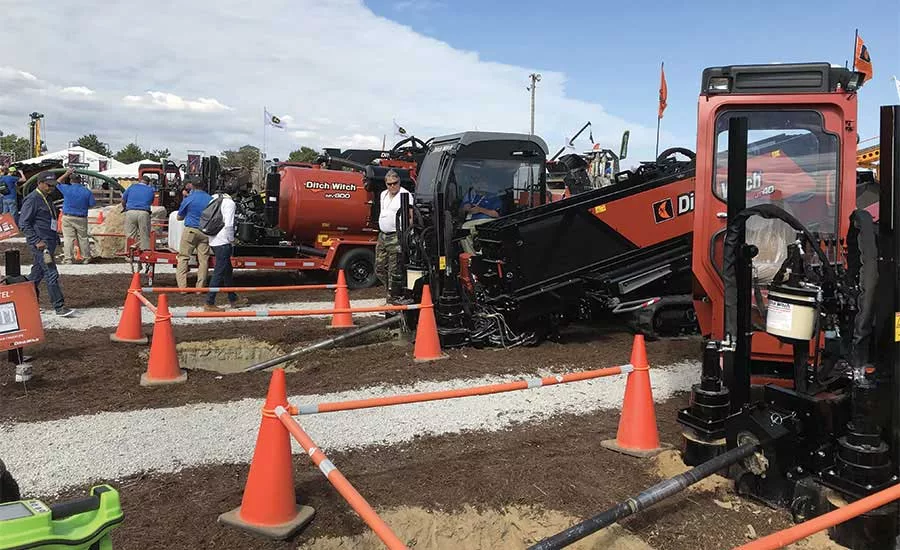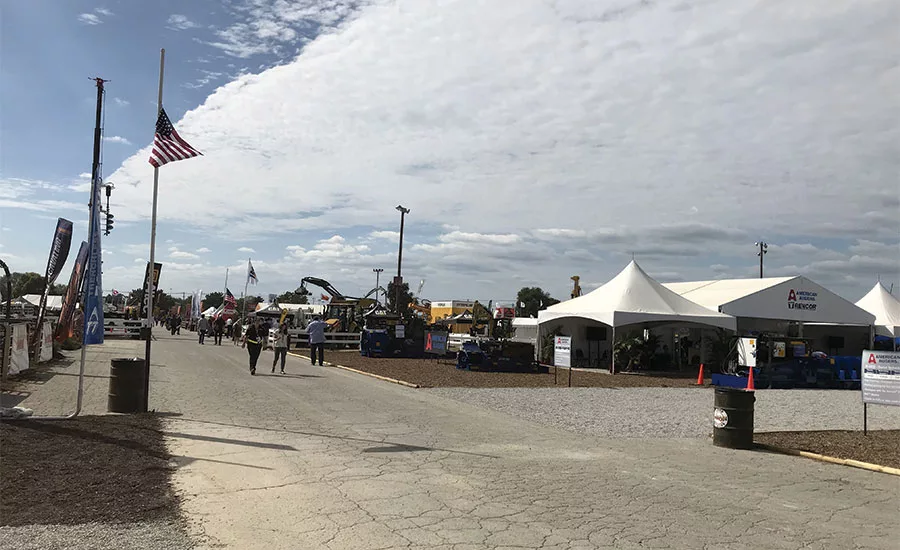What Challenges Will HDD Contractors Face in 5 Years?

The ICCUE event in Louisville, Ky., featured dozens of demos of heavy equipment — everything from HDD rigs to dozers. Source: Jeremy Verdusco photos

From left, Tod Michael, product manager for trenchless products at Vermeer; Kenny Clever, vice president of sales and marketing for American Augers; and Seth Matthesen, senior HDD product manager at Ditch Witch, speak on a panel at the ICUEE Demo Stage.

The outdoor demo and display areas at the event covered dozens of acres at the Kentucky Exposition Center in Louisville, Ky. Source: Jeremy Verdusco
The International Construction & Utility Equipment Exposition (ICUEE) tears up the field at the Kentucky Exposition Center in Louisville, Ky., each fall. Contractors can see the latest and greatest from manufacturers in the HDD and utility fields, and even see equipment at work. Some of the outdoor displays even encourage contractors to hop in the driver seats of dozers, earth movers and other heavy equipment to tear up ground themselves. National Driller attended this year’s event, held Oct. 3-5.
Manufacturers like Ditch Witch, Vermeer and American Augers have a huge footprint in the HDD industry and at the show. Each brought a wide range of equipment to demo. All three were also represented on a panel discussion, “Horizontal Directional Drilling – Present and Future Market Segments.” The panel featured Kenny Clever, vice president of sales and marketing for American Augers; Tod Michael, product manager for trenchless products at Vermeer; and Seth Matthesen, senior HDD product manager at Ditch Witch. Afterward, we caught up with Matthesen to see what thoughts he could share with National Driller readers.
Our conversation here has been edited for clarity and space.
Q. What kind of advice do you give to folks who want to buy their first rig but haven’t worked in HDD before?
A. Well, it depends. Most of the time when someone comes and they’re buying their first rig they have some type of person that they have involved themselves with that has some background, some training. It’s non-typical for us to get somebody who goes from farming to, all of a sudden, they’re going to drill. But, we do have that sometimes, and that’s the reason we have training. It’s very important. So, we have a training program. If you’ve seen our booth, we have virtual reality that takes you through the operation of it. We also have on-site training through our dealer organizations. We have a whole set of training modules that you can go through and get tested on. It’s a good start, but there’s nothing like on-site training.
Q. What are some of the regional hotspots you’re seeing in the business right now?
A. From a fiber standpoint, we have a lot going on in California, Texas, Georgia, Kansas City. You look at rural development, in Minnesota, Iowa, the Midwest — there’s stuff going on everywhere. Then there’s the gas stuff that’s going on in the Dakotas, the shale plays, that have softened up a little bit. There’s still some of that going on, too. In the Gulf Coast, they’re still doing a lot of pipeline work. They have to. They have to have a way to get those products off of development. You see what happens when we have a hurricane. Everything goes up 70 cents a gallon because it’s shut down for a week.
Q. For contractors you work with, what are the biggest challenges they face right now?
A. What we hear the most in our realm is the labor force, dealing with cross bores — are you familiar with what cross bores are? When you drill, you have to cross utilities. The opening and daylighting of that product so you make sure you don’t hit it, that’s a cross bore. And then mud disposal.
Q. What do you think the challenges will be like in five years? Will they be the same or different?
A. I think cross bores are going to continue. The easements are this big [holds up hands in a small square] and we continue to put stuff in them, so it’s going to be more and more crowded. So those challenges will still be there. Technology, I think, will get better, but I still don’t see a day where we don’t have to expose it and see it. Lighting it up and seeing it underground through some type of headset, you still have to be cautious.
Q. What challenges do manufacturers currently face?
A. Our challenges are, obviously, having a product that’s at the right price where they (contractors) can go do the work and make money. With a lot of the regulations with Tier, things have become more expensive. There are market pressures from steel and components that affect the price, so it just seems like our customers aren’t able to bear more price per foot as we are getting increases from our vendors and the regulations that cause that.
To put it bluntly, the Tier process that we went through raised the price automatically probably 30 to 40 percent for our machines. Granted, it was over a 10-year period, but it was a pretty big jump in total cost. That’s been a struggle, I know, for our customers as well.
Q. And that’s been across your whole ranges, right? It’s not just your HDD.
A. It affects the product lines that have less volume, obviously, more because you buy less engines. The more volume you have, the better. So it may have not hit the skid-steer market as much … but you have to average that out across the whole product line.
Q. Would you expect challenges to be the same for manufacturers in five years?
A. I think they’d continue to be the same. We continue to try to be better and lean, and use lean management and try to do better things to decrease our internal costs. Then, obviously, we need to work with our vendors to make a product that makes sense and can meet the challenges and the needs of our customers without going overboard.
Q. What do you tell contractors who have trouble finding talented crews?
A. That’s a challenge, and we’ll have to continue to work with them. That’s one of the hardest things. There has to be a mental mind change from our young people to want to go into construction. Back when I was a kid I heard, “You don’t want to grow up to be a ditch digger.” Well, I ended up being a ditch digger. But, at the end of the day, for kids it’s an even worse connotation today. People just don’t want to use their hands anymore. It is a struggle. I see it in my own family.
Q. Has the, for lack of a better word, “gamification” of some of your controls helped?
A. It helps. It helps that new blood, and it takes the older generation and they kind of think, “What’s all this stuff? I don’t want to deal with it.” It does help quite a bit. The commonality of controls and the interaction — the interaction, both that the machine has now and the industry has.
Q. Where do you see Ditch Witch in five years? Do you expect more international growth? More domestic growth?
A. We see the international market coming back. There’s no doubt about that.
Looking for a reprint of this article?
From high-res PDFs to custom plaques, order your copy today!



